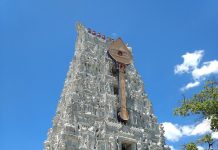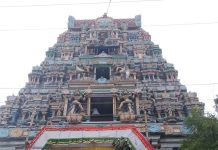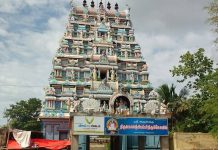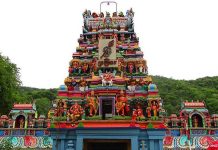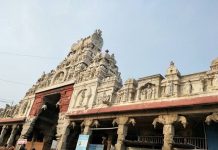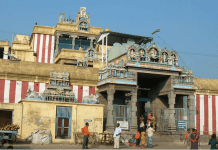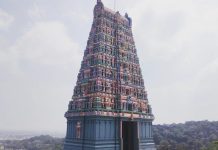The Subramaniya Swamy Temple, Thiruparankundram is a revered Hindu temple located in the city of Madurai, Tamil Nadu, India. The temple is dedicated to Lord Murugan, also known as Subramaniya Swamy or Kartikeya, who is considered to be the God of war, victory, and wisdom in Hindu mythology. The temple is situated on a hill and the first among the six abodes of Lord Murugan (also known as Arupadai Veedu).

Mythology
According to Hindu mythology, demon king Surapadman obtained immense power through severe penance and went on to rule over 1008 worlds. He imprisoned Indra, the king of the Gods, and also coveted Indrani, his wife. Indra sought the help of Murugan, the God of war and son of Shiva. Murugan, in turn, defeated Surapadman in a battle at Thiruparamkundram, killing all of his sons except Iraniyan. Surapadman hid under the sea, but Murugan split him into two pieces, which became the God’s divine vehicles, the peacock and rooster. The day when Murugan defeated Surapadman is celebrated as the Skanda Sashti festival in Murugan temples across India.
In gratitude for his help, Indra married his daughter Deivayanai to Murugan at Thiruparamkundram. The temple is also said to be where Murugan worshipped Shiva as Parangirinathar. The divine marriage is recorded in the Kanthar Anoobothi, which recounts how Murugan asked all the divine angels and Gods who attended the wedding to return to heaven in their own vehicles at the speed of thought, a feat that demonstrated the God’s power and prowess.
History
The Subramaniya Swamy temple is constructed in rock-cut architecture and is believed to have been built during the 6th century by the Pandyas. The temple has a fascinating history. Inscriptional evidences suggest that the temple was a Jain cave before it was converted into a Hindu temple during the 8th century under the tutelage of Gajapathy, the minister of a later Pandya king. The temple saw several additions during the regime of Madurai Nayaks, who commissioned the pillared halls in the temple.
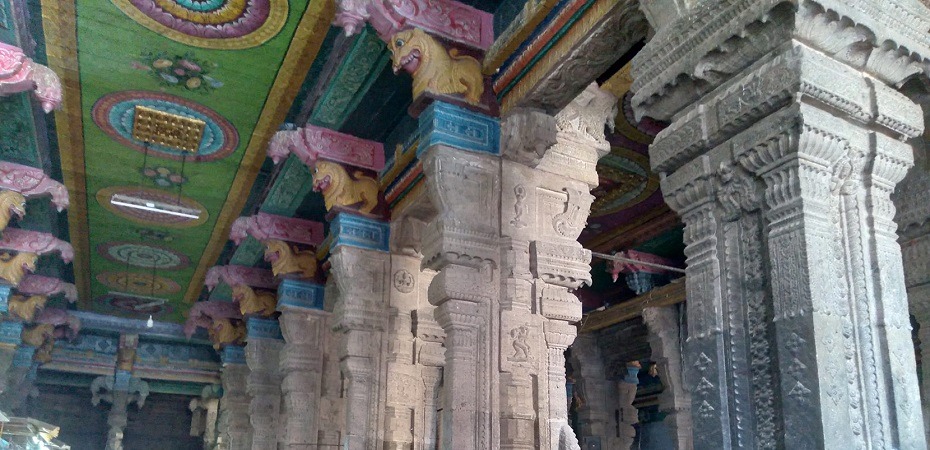
Architecture
An Aasthaana Mandapa with several artistically carved pillars leads one to the towering 150 feet (46 m) high seven-tiered rajagopuram at the entrance. The granite hill behind the temple is 1,050 ft (320 m) and has a shrine of Kasi Viswanatha (Shiva) at the top.
The temple also houses the deities Shiva, Vishnu, Vinayaka (Ganesha), and Durga. The temple’s inner rock-cut image is made from a single stone, and the Kambathadi Mandapam, Ardha Mandapam, and Mahamandapam, the three halls leading to the sanctum, are situated at varying elevations. The main shrine is an early rock-cut temple that has cells housing the sanctums of Murugan, Durga, Vinayaka, Shiva, and Vishnu. All the statues are carved on the wall of the Parankundram rock.
A notable feature of this temple is that the Shivalinga in the sanctum is believed to be a swayambhu, or self-manifested, and is believed to be one of the oldest lingas in the world. The temple’s complex has many sculptures, with the life-sized sculptures in the mandapas of the Nayaka period during the 16th century being particularly noteworthy.
Festivals
Thiruparamkundram Temple is famous for its festivals that are celebrated throughout the year. The most prominent festival is the Skanda Shashti festival, which is celebrated during the Tamil month of Aippasi (October – November). It is a six-day festival where the killing of Surapadman by Murugan is enacted on the last day. The festive image of Murugan is taken on different mounts around the streets of the temple during the festival.
The Brahmotsavam festival is celebrated in the Tamil month of Panguni, where the Vishnu named Pavalakanivai Perumal and Murugan are taken in procession to Madurai to celebrate Minakshi’s wedding (Chittirai festival), with residents of Madurai dressed in festive clothing. Nakkirar’s association with this temple is also celebrated as a festival.
The Karthigai Deepam festival is celebrated during the Tamil month of Karthigai by lighting a lamp on top of the hill. Vaikasi Visakam and the float festival in Thai (Tamil month) are the other festivals celebrated in the temple. As the image of Vishnu is in the temple, Vaikunta Ekadashi is also celebrated.
These festivals attract a large number of devotees from all over the country and provide a glimpse into the rich cultural heritage of Tamil Nadu. The celebrations are a blend of traditional rituals, music, dance, and feasting that bring people together to celebrate the divine.
Timings:
The Subramaniya Swamy Temple in Thiruparankundram opens at 5:00 a.m. and closes at 9:00 p.m. However, the temple rituals are performed three times a day: Kalasanthi at 8:00 a.m., Uchikalam at 12:00 p.m., and Sayarakshai at 6:00 p.m. Visitors are allowed to enter the temple during the opening hours and participate in the daily rituals.
How to Reach:
By Air:
The nearest airport is Madurai Airport, which is about 10 km away from the temple. From the airport, you can hire a taxi or take a bus to reach the temple.
By Train:
Madurai Junction is the nearest railway station, which is about 9 km away from the temple. From the railway station, you can hire a taxi or take a bus to reach the temple.
By Road:
The temple is well connected by road. You can hire a taxi or take a bus from Madurai city to reach the temple. The temple is located about 8 km from Madurai city center. Auto-rickshaws, buses, and taxis are easily available in Madurai city for local transportation to reach the temple.



























